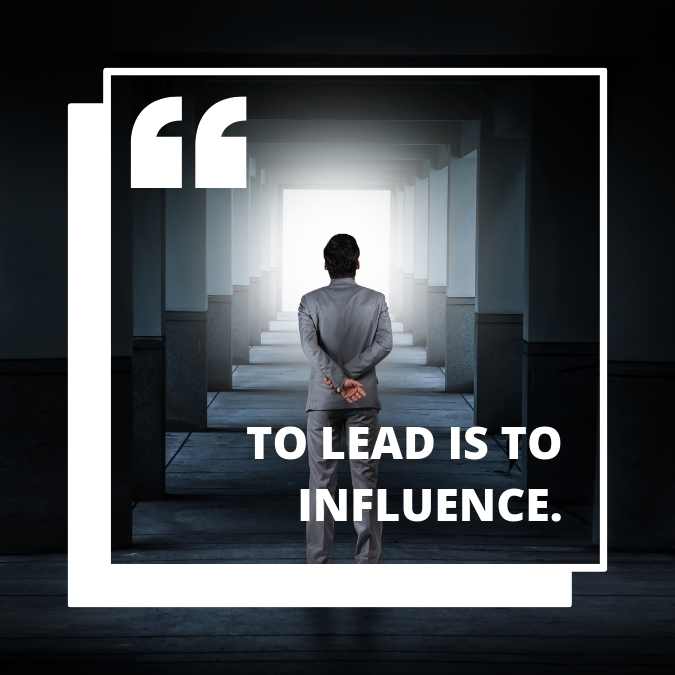Influencer marketing has become a popular marketing strategy for businesses looking to reach a larger audience in recent years. The rise of social media platforms has made it easier for influencers to connect with their followers, as well as for brands to approach influencers for collaborations.
Influencer marketing, however, has not always been a collaborative effort. In this article, we will examine the evolution of influencer marketing, from its early days as celebrity endorsements to the modern approach of collaborative campaigns.
Influencer Marketing

Influencer marketing is a marketing strategy that has gained popularity in recent years. It entails collaborating with people who have a large following on social media platforms to promote a product or service to their followers.
This marketing strategy can be viewed as a form of social proof, in which an influencer’s endorsement can create a positive perception of a brand and influence their followers’ purchasing decisions.
The rise of social media platforms such as Instagram, TikTok, and YouTube has contributed to the popularity of influencer marketing. Individuals have been able to gain a large following and establish themselves as influencers thanks to these platforms. Brands have recognized the value of collaborating with these influencers in order to reach a larger audience and promote their products or services.
Influencer marketing has progressed from simple celebrity endorsements to more collaborative campaigns in which influencers participate in the creative process. Brands are now collaborating with influencers to create content that is both authentic to their brand and resonates with their followers.
Because influencers are perceived as more trustworthy and relatable by their followers, this approach has proven to be more effective than traditional advertising methods.
The Road to Modern Influencer Marketing

Phase 1: the pioneers
Marketers recognized the power of influencers as early as the 18th century. Josiah Wedgwood was a British potter whose cream-colored works of art won Queen Charlotte’s approval in 1765, earning him the official title of “Her Majesty’s Potter.”
Knowing that the Queen was the most powerful person in the world at the time, Wedgwood used his newfound celebrity to promote his pottery as “Queensware,” the world’s premier luxury brand. People began to flock to his business and claim his work soon after receiving royal support, which catalysed his brand.
Phase 2: fictional characters
The following era saw the introduction of a slew of fictional characters as influencers. Coca-Cola’s popularization of Santa Claus in 1932 is the most famous example.
Coca-Cola used the jovial image of Santa Claus to convey joy during an otherwise miserable period, refocusing its target audience and helping consumers remember the company’s joyful qualities, to boost beverage sales during the height of the Great Depression.
Phase 3: celebrity endorsements
Then there are celebrity endorsements. In contrast to fictional characters such as Santa Claus, celebrities are real people with real preferences who are idolized by a large number of people due to their fame.
As a result, they can persuade customers to buy the products they support. As a result, companies such as Nike and Pepsi have begun forming partnerships with celebrities to promote their products in exchange for publicity.
However, celebrity endorsements became less effective as people were unable to relate to their extravagant lifestyles.
Phase 4: reality TV
Reality TV shows like The Bachelor and Keeping Up With The Kardashians were instrumental in fusing real life and screen life. Whether we like to admit it or not, most of us are drawn to reality TV’s larger-than-life personalities.
To some extent, because these shows are based on portraying “reality,” the stars are perceived as more endearing and authentic than traditional celebrities. Reality TV stars paved the way for what was to come with social media, thanks to their sudden celebrity and increased viewer engagement.
This leads us to…
Phase 5: influencer marketing
Everyone has jumped at the chance to share their daily lives online, thanks to the rise of social media platforms such as Facebook, Instagram, Twitter, and YouTube. Of course, celebrities, reality TV stars, and even bloggers have amassed a large number of social media followers as a result of their fame.
However, a new phenomenon quickly emerged: a small group of “ordinary” people began to amass a sizable following as well, owing to their highly engaging content and close interactions with their followers.
These “ordinary” people have become influencers due to their ability to influence the decisions of their audience.
Influencers are more like us than celebrities or even reality TV stars. The majority of them do not own large mansions or travel by private jet. Instead, they share content about the good, bad, and ugly in their lives. Their followers have given them a high level of trust and authority due to their consistent authenticity.
As the number of influencers grew, brands began to leverage their influence by sending them free products (and sometimes even payment) in exchange for telling their audience about them. This strategy evolved into the industry we know and love today: influencer marketing.
The Emergence of Social Media Influencers

Social media platforms such as Instagram, TikTok, and YouTube have resulted in the rise of social media influencers. These influencers are people who have a large social media following and have established themselves as experts or thought leaders in specific niches.
Influencers were frequently celebrities or individuals with a large following on other platforms such as blogs or YouTube in the early days of social media. However, as the popularity of social media platforms has grown, so has the number of influencers from various backgrounds and niches.
Social media influencers have been recognized by brands for their ability to promote their products or services to a large audience. Social media influencers are frequently more approachable and relatable to their followers than traditional celebrity endorsements. As a result, their endorsements may appear more genuine and trustworthy, leading to increased engagement and brand loyalty.
Influencers on platforms like Instagram and TikTok frequently specialize in a specific niche or interest. A fashion influencer, for example, may share style tips and recommendations, whereas a fitness influencer may share workout routines and healthy eating recommendations. Because of this specificity, brands can work with influencers whose niches complement their products or services, resulting in a more targeted and effective marketing campaign.
The rise of social media influencers has influenced how brands approach marketing. Brands are now concentrating their efforts on cultivating relationships with influencers and developing collaborative campaigns that resonate with their followers. It will be interesting to see how influencers adapt and how their impact on the marketing industry evolves as social media continues to evolve.
The Rise of Collaborative Campaigns

The rise of social media influencers has resulted in a new marketing strategy known as collaborative campaigns. Brands and influencers collaborate to create content that promotes the brand’s products or services while also highlighting the influencer’s personality and style.
Collaborative campaigns have grown in popularity in recent years due to the numerous benefits they provide to both brands and influencers. Working with influencers allows brands to reach the influencer’s audience and increase brand awareness among their followers. Furthermore, influencers can provide valuable feedback and insights into their audience’s interests and preferences, which can assist brands in tailoring more effective marketing campaigns.
Collaboration with brands can be a lucrative opportunity for influencers to monetize their platform and earn income through sponsored content. It also allows them to align with brands that align with their personal brand and values, which can boost their credibility and appeal to their target audience.
Collaborative campaigns can take a variety of forms, ranging from sponsored social media posts to product reviews and even full-fledged advertising campaigns.
The “takeover,” in which an influencer takes over a brand’s social media account for a set period of time and creates content that aligns with the brand’s messaging and values, is a popular type of collaborative campaign.
Another type of collaborative campaign is the “influencer event,” in which brands invite influencers to events or product launches and encourage them to share their experiences on social media. This type of campaign can create a lot of buzz and excitement for a brand while also providing valuable exposure to the brand’s products or services.
Collaborative campaigns have become an important component of many brands’ marketing strategies, and they show no signs of abating. It will be interesting to see how brands and influencers continue to collaborate to create effective and engaging marketing campaigns as the influencer marketing industry evolves.
The Future of Influencer Marketing

As new technologies and platforms emerge, as well as consumer behaviours and preferences change, the future of influencer marketing is constantly evolving. However, some trends and predictions can provide a glimpse into the future of influencer marketing.
Rise of micro-influencers
The importance of micro-influencers is one trend that is expected to continue. Individuals with smaller but highly engaged followings, often in specific niches or communities, are considered micro-influencers.
These influencers have higher levels of engagement and trust with their audiences, which can lead to more effective marketing campaigns for brands. Micro-influencers are likely to play an even larger role in the influencer marketing landscape as brands strive to create more targeted and authentic marketing campaigns.
Video content
Another thing to keep an eye on is the rise of video content. The popularity of video content on social media platforms such as YouTube, TikTok, and Instagram is expected to continue.
Video content has been shown to be more engaging and memorable than other forms of content, so brands that incorporate it into their influencer marketing campaigns are likely to see higher levels of engagement and reach.
Use of artificial intelligence (AI)
Influencer marketing is also expected to benefit from artificial intelligence (AI) and machine learning (ML). These technologies can assist brands in identifying and targeting the most effective influencers for their campaigns, as well as optimizing campaign performance and calculating ROI.
Furthermore, AI and machine learning can assist brands in identifying emerging trends and forecasting future consumer behaviours, allowing them to stay ahead of the curve in their marketing strategies.
Instagram and Tiktok
Instagram and TikTok are likely to remain dominant players in the influencer marketing landscape in terms of platform-specific trends. However, as their audiences grow and become more engaged, emerging platforms such as Clubhouse and Twitch may become important channels for influencer marketing.
Finally, it is critical to recognize that the future of influencer marketing is more than just technology and platforms. As consumers become more aware of influencer marketing and the potential for sponsored content to feel inauthentic, brands must focus on developing genuine relationships with their influencers and developing marketing campaigns that feel authentic and align with their values and messaging.
The future of influencer marketing will most likely be shaped by a convergence of technology, shifting consumer behaviors, and evolving platforms. Brands that can adapt to these changes and create effective, targeted, and authentic influencer marketing campaigns will fare well in this rapidly changing industry.
Conclusion
Since the early days of celebrity endorsements, influencer marketing has come a long way. Influencer marketing is now a collaborative effort between brands and influencers, with both parties collaborating to create engaging content that resonates with their audience.
Influencer marketing will evolve alongside social media, and it will be interesting to see where this marketing strategy goes in the future.




[…] 24 May 2023 by mukuba2002 0 Comments 0 View Home Digital Marketing Measuring the ROI of Influencer Marketing in Kenya Prev 0 The Evolution of Influencer Marketing in Kenya 16 May 2023 […]
[…] Influencer marketing involves collaborating with individuals who have established credibility and a large following on platforms like Instagram, YouTube, or TikTok. These influencers have the ability to sway consumer opinions and purchasing decisions through their content and recommendations. […]
[…] Influencer marketing keeps on being a powerful strategy for reaching and engaging audiences in Kenya. Partnering with local influencers who align with your brand values and resonate with your target demographic can intensify the reach of your Pinterest ad campaign. […]
[…] Influencer marketing is a form of collaborative partnership between brands and social media influencers who have a substantial following and engage with their audience through various platforms like Instagram, YouTube, or TikTok. […]